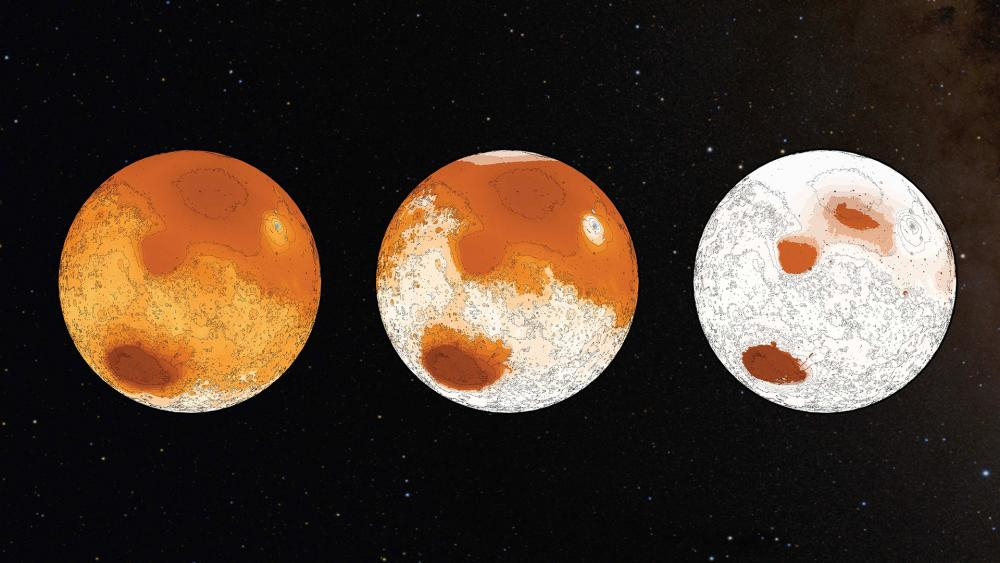 The subsurface of early Mars was highly likely to have been habitable for microorganisms that feed on hydrogen and produce methane, according to a modelling study published in Nature Astronomy. Predicted biomass production may have been comparable to that of the early ocean of Earth. This large biosphere may have had a global cooling effect on Mars’s early climate, possibly putting the planet's habitability to an end.
The subsurface of early Mars was highly likely to have been habitable for microorganisms that feed on hydrogen and produce methane, according to a modelling study published in Nature Astronomy. Predicted biomass production may have been comparable to that of the early ocean of Earth. This large biosphere may have had a global cooling effect on Mars’s early climate, possibly putting the planet's habitability to an end.
The potential habitability of early Mars, more than 3.7 billion years ago, has been extensively debated. Evidence suggests that the red planet hosted — at least for part of its history — potentially favourable conditions for the development of life. The likelihood of such a scenario, however, has rarely been established quantitatively.
Boris Sauterey and colleagues model the interaction between the early environment on Mars and an ecosystem of methanogenic hydrogenotrophs — microorganisms that survive by consuming hydrogen and producing methane — which are considered to be among the earliest forms of life on Earth. The authors’ simulations predict that the Martian crust was a viable place for this ecosystem — provided that the surface was not fully covered with ice — and could have hosted a biomass production similar to that of the early ocean of Earth. The team predicts that this ecosystem would have triggered a mutual feedback with the climate, cooling it globally by up (instead of "30") to 40 degrees and creating less habitable conditions closer to the surface. This would have forced the microbes (instead of « bacteria ») to move progressively deeper within the crust, possibly causing ther own demise if no other internal source of energy was available to them.
Looking forward, the authors identify three sites; Hellas Planitia, Isidis Planitia and Jezero Crater, as the best places to look for signs of this early methanogenic life near the surface of Mars.

Median evolution of the ice coverage of Noachian Mars under the influence of hydrogenotrophic methanogens
as predicted by our model (assuming a freezing point of brines of 252K)
Reference
Early Mars habitability and global cooling by H2-based methanogens, Boris Sauterey, Benjamin Charnay, Antonin Affholder, Stéphane Mazevet, Régis Ferrière, Nature Astronomy, 10 octobre 2022.
Contacts
Boris Sauterey, post-doctorant ENS-PSL, boris.sauterey@ens.psl.eu.
Stéphane Mazevet, Observatoire de la Côte d'Azur, stephane.mazevet@oca.eu.


